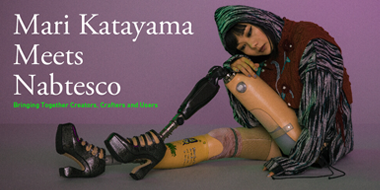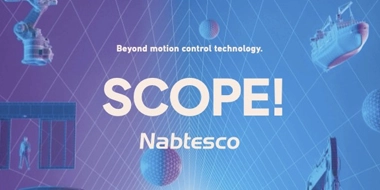
Challenging the Development of a World-First Platform Screen Door Unit to
Unlock the Future of Railroad Infrastructure
Japan is renowned globally for its advanced rail technologies, including the iconic Shinkansen bullet train system. Nabtesco has been developing core components of railroad vehicles, such as brakes, doors, and platform screen doors, thereby supporting the safety of railroad infrastructure based on its high technological standards.
This time, the new mission set for Nabtesco was to develop a world-first platform screen door unit. Installed at Osaka Station, these full-height, all-glass movable doors can adjust to trains with varying door positions, enabling seamless passenger boarding and disembarking. Embedded in the door body are large digital signages displaying the latest train information, making this an entirely new type of platform door that symbolizes the "station of the future." Despite the anticipated challenges, the West Japan Railway (JR WEST) Group and Nabtesco, which have jointly carried out many projects, have finally completed this product through open innovation.
The cross-functional team comprised a diverse array of new and experienced members, contributing to the inheritance of the passion and technical expertise that drive innovation at Nabtesco. Let's go behind the scenes with six innovators to uncover the fascinating stories behind the development of this world-first platform screen door unit.
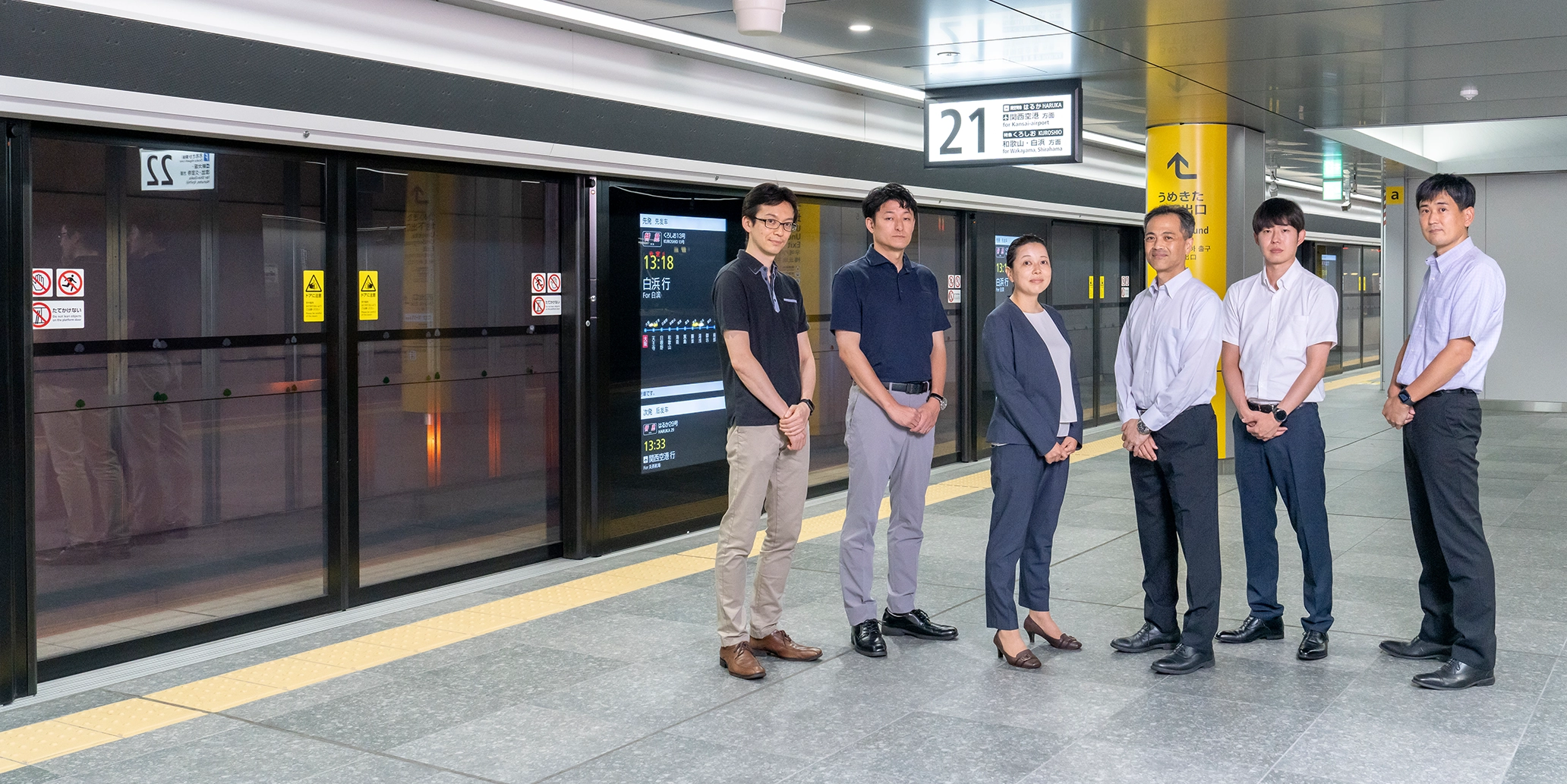
A project that starts with a declination...
Could you share with us how this project got started?
Niiyama:It all began with a request from the JR WEST Group, with whom we had already been working for a long time on projects such as the introduction of platform screen doors to high-speed and conventional railway lines. An innovative urban development scheme was underway in the Umekita Area, which is situated to the north of Osaka Station. A new underground platform of Osaka Station (JR WEST) would be opened in the Umekita Area as part of the scheme. They approached us with an ambitious goal to make it "a station of the future," befitting the gateway to the Kansai region, by installing platform doors that could surprise the world.
Katayama:The initial discussions took place around March 2017. Since the new Umekita underground platform would serve trains with varying door layouts, the platform doors needed an adaptable design to accommodate passenger boarding and disembarking from any door position. Additionally, measures were required against issues like wind and noise from passing freight trains to provide a comfortable station environment. There were numerous complex challenges. At that stage, we could not envision us developing and operationalizing such an advanced product. It was disappointing, but we felt we had to decline the offer. Needless to say, if we had accepted an offer, we would have had no alternative but to get it done. But at that early point, I lacked the full confidence to accept the offer.

In the end, though, you launched the development project that you had initially declined. What made you change your mind?
Katayama:About a year later, they approached us again. After an inspection on another platform door project for the bullet train, JR West said they had "one more crucial matter" to discuss. They had proceeded with the project inside JR WEST during the past year and had made substantial progress - developing conceptual plans, door designs, opening patterns, sizing, and more. Hearing their vision gave us a sense of feasibility, but lingering uncertainty remained, so we couldn't immediately agree. However, as we understood how serious they were, we realized that if another company accomplished this first, we risked losing not just our strong Japanese market* position, but also the trust we had built with the JR West Group over years. With that sense of crisis, we decided to accept the project that very day. This was where we took on the challenge of developing a world-first full-height platform screen door unit as their value co-creation partner.
We hold roughly a 95% share of the domestic full-height platform door market (Nabtesco's estimate).
How did each of you feel when you first heard that you would be engaged in the project?
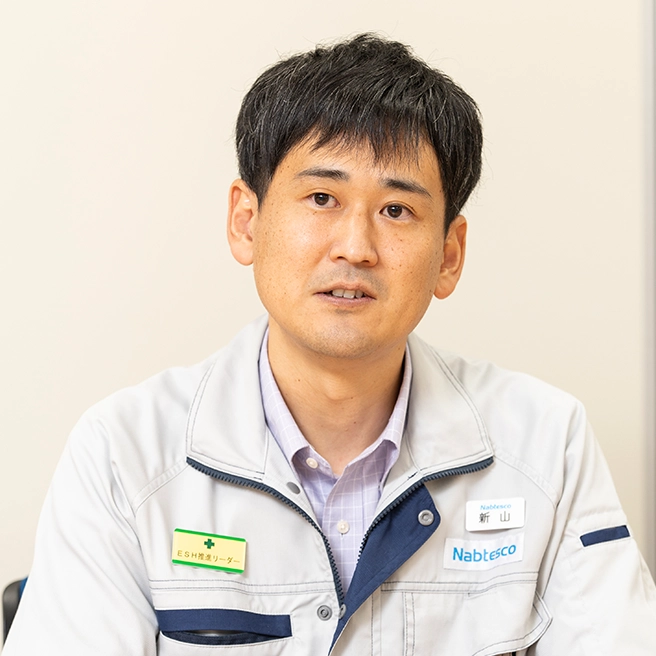
Niiyama:In fact, at Nabtesco, we aspired to develop flexible platform doors and made prototypes, but never the real opportunity to pursue it, until this request. I saw it as our long-awaited chance and felt genuinely excited about the potential for business growth. But the extreme difficulty was daunting, so I was honestly very anxious too.
Akutsu:When I was asked to join the team, I had a certain degree of confidence about the identification of incoming train cars, which could cause a system issue, as we had already accumulated some know-how in this area through past projects. But aspects like synchronizing multiple door movements and the control system design - I couldn't envision the design approach, so I felt those would be struggles.
Inoue:I actually volunteered myself, swapping roles with a colleague originally assigned from my department, as I had some ideas in my head. Initially I was optimistic that we could manage it somehow, but it ended up being far more difficult than I imagined.
Sakaguchi: I had been interested in this project even before joining the team. So when they asked me to participate after the completion of the second prototype, I was delighted. Looking back, it seems an intimidating challenge, but at that stage, I had zero fear - just pure enthusiasm.
Ichiryu:The project was already at the construction stage when I joined the team, but I had heard that the ongoing project was extremely challenging. Never did I expect to be called upon myself. By then, installation and equipment were already set up, but the software remained unfinished. We had mountains of tasks and concerns, so I was terribly worried about whether everything would all be OK.
Structure of full-height platform screen doors
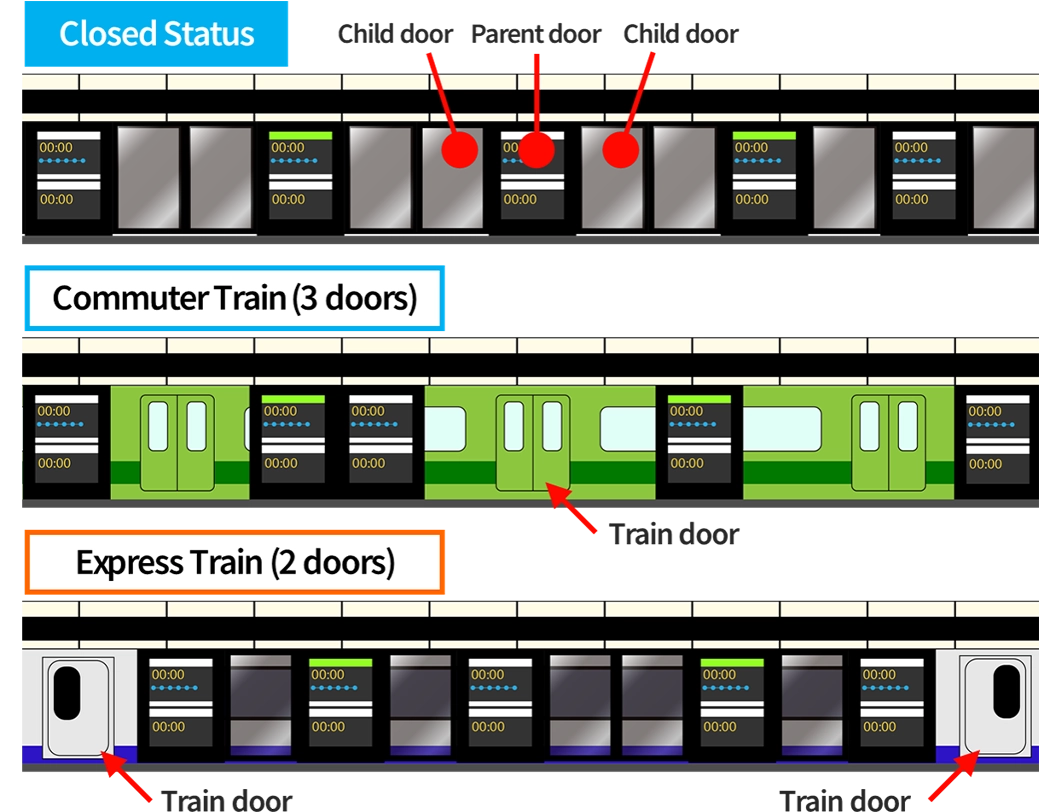
The illustration at the top shows how the doors look when all the doors are closed. As local and express trains have different numbers of doors in different positions, the location of openings needs to be changeable.
Main parts of full-height platform screen doors
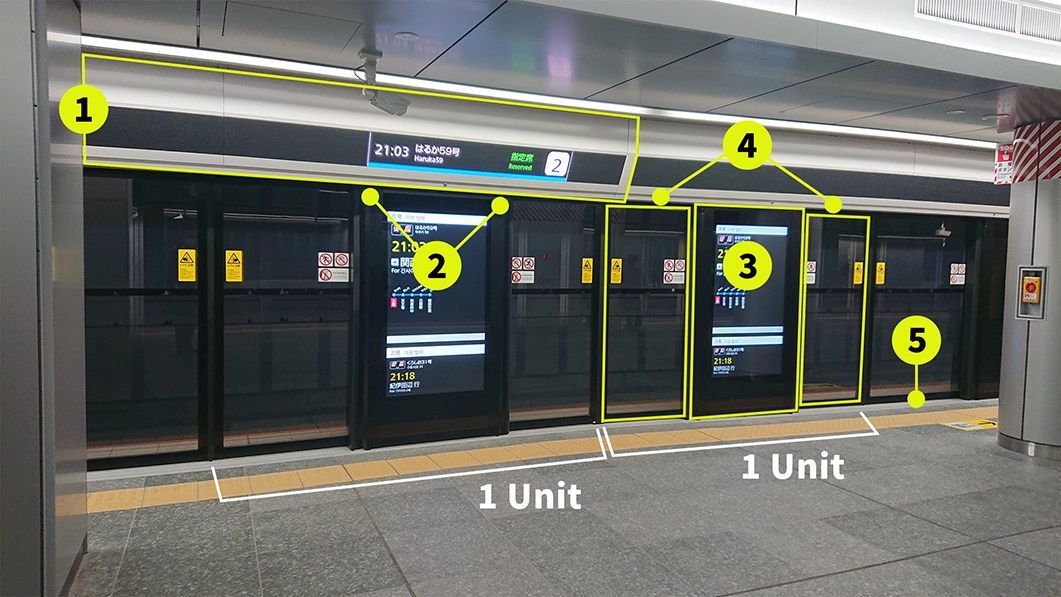
(1)Header box
Train information and lines showing the location of door openings are displayed on LED signage so that users can instantly see where they should be waiting for user-friendly purposes.
(2)2D sensor
If someone approaches the detection area, the doors will stop for safety reasons.
(3)Parent door
The door has a 65-inch large space for digital signage to display train information, warnings, advertising, and other information.
(4)Child doors
The parent door in the middle and the child doors on both sides operate in an integrated system.
(5)Guide rail
This step-free and barrier-free guide rail has grooves that are so small they will not even catch heels.
Developing an inquisitive mind to narrow the gap between theoretical thinking and reality
How did the development project go during the design phase?
Akutsu:Based on the conceptual design received from JR West in 2018, we created the first prototype a year later in 2019. Early on, we focused solely on achieving the fundamental door "movement" to create the necessary openings. Although we normally would need to consider other aspects like overall equipment size and installation method, we had no capacity for that. Realizing the required door movement alone was extremely challenging.

Niiyama:The further we proceeded in the design process, the more impossible it seemed... We were under pressure with a looming design submission deadline. Particularly, the most difficult part was the traveling mechanism of the doors. Normally, full-height platform screen doors travel on rollers like automatic doors. But the parent-child door relationship here was more akin to the setup of half-height platform doors. Initially we considered a linear motion guide mechanism, but couldn't resolve issues with door thickness and load-bearing requirements. When I was struggling with this problem, my boss advised "Why don't you try the door hanger-roller method again?" The shift to the adoption of the door hanger-roller mechanism turned out to be the breakthrough that allowed us to finally see a path to realizing it.
Inoue:We showcased the first prototype in front of the press. Although the time was limited, we managed to show them minimal movement at least. Nevertheless, we have had to make many more breakthroughs before elevating the movement to a practical level. For the second prototype, it felt like we were back at square one, starting over.
Linear motion guide mechanism
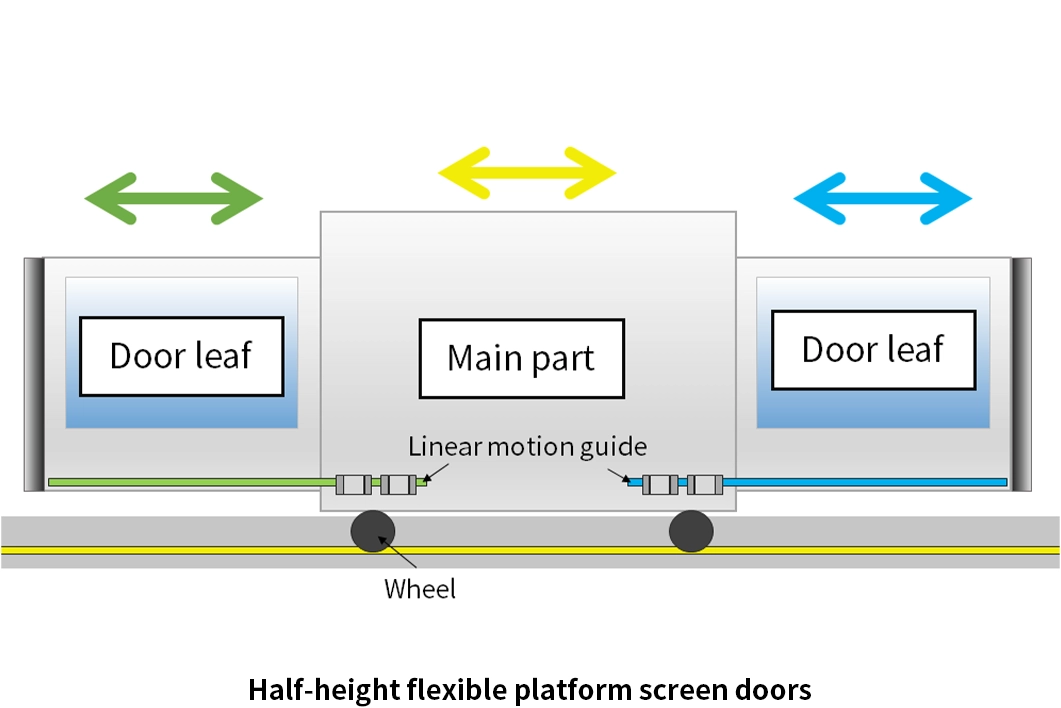
Each door is supported by the main part via a linear motion guide.
Door hanger-roller mechanism
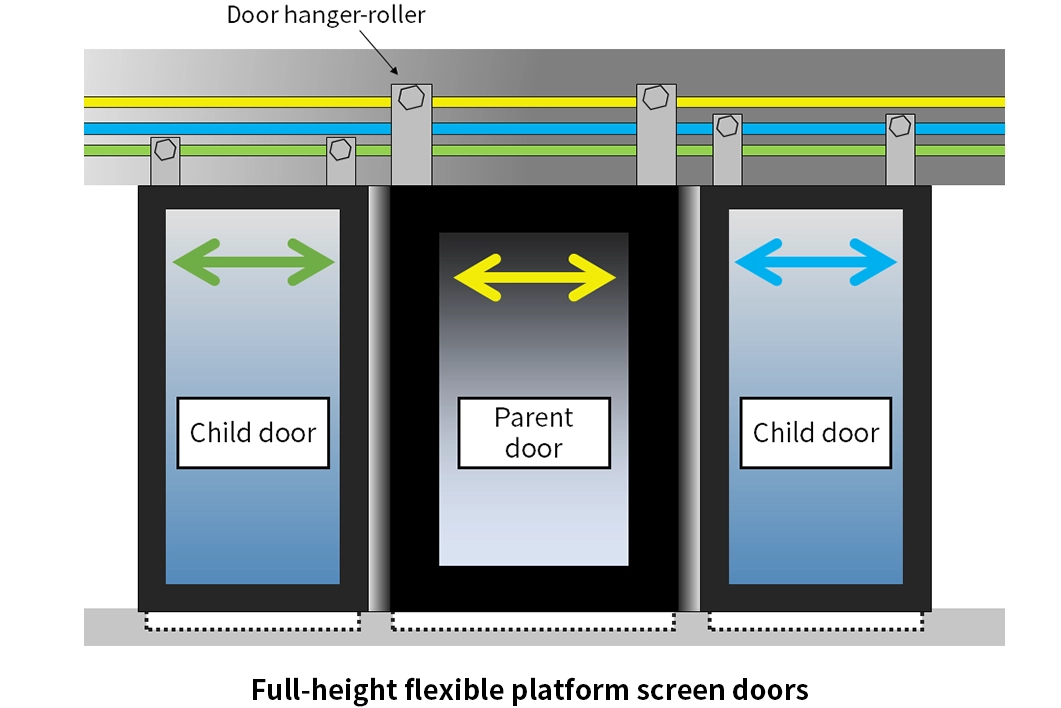
Each door is supported by a roller. The doors are separately hung from the ceiling rail to distribute the load of the door unit, enabling lighter weight and a simpler structural design.
What difficulties did you encounter during the development of the second prototype?
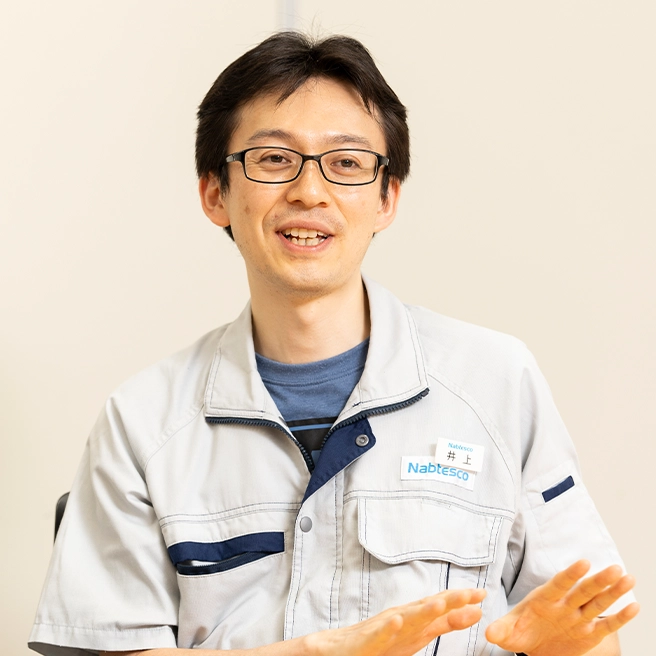
Inoue: A particularly difficult challenge was to slide two neighboring units in the same direction with no gap between them. In the first prototype, we controlled the speed of the units so that they would move together. However, there were slight variations between individual doors, it was difficult to move them uniformly with high accuracy, which resulted in a gap arising between them as they moved. Calculations that worked in theory did not necessarily work in reality. For a while, I spent all my time thinking about it. Then I realized using electromagnetic locks could achieve practical synchronized control. But this meant newly incorporating electromagnetic equipment into an almost completed design. However, Mr. Niiyama and other mechanical designers managed to make it in time while the start of mass production was approaching.
Niiyama:We revised our design all over again by taking into account installation and operation, including the three guide rail grooves at the foot of the doors. Initially 17mm wide, we received safety feedback about potential tripping risks for people wearing heels when boarding. Since this was an entirely new mechanism, we had to explore and set the safety standards ourselves. We started by researching heel sizes and shapes online, visiting shoe stores to examine high heels in person, and consulting with JR West. Ultimately, we set the groove width at just 5mm to accommodate even spiked stiletto heels.
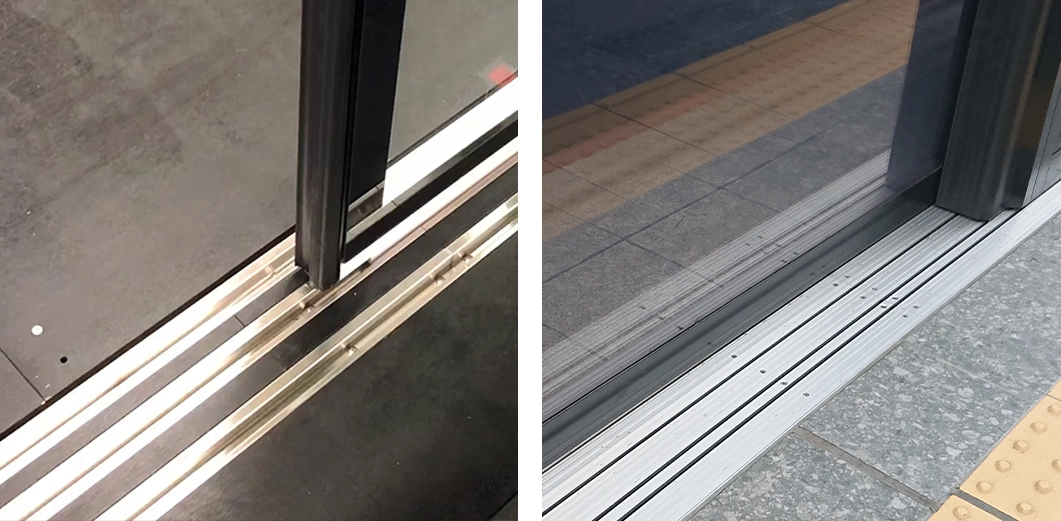
Left: Rail used in the first test model
Right: Rail actually used in the platform screen door unit
Niiyama:We also made significant design changes from the first prototype to balance functionality and aesthetic appeal. On the functional side, we angled the bottom front of the header box to improve visibility of the signage and make the header box smaller to ease the feeling of pressure. The header box contains a great deal of equipment and cables. Reducing its cross-sectional area by 10% while still accommodating all components was an extremely difficult challenge. Typically, half-height platform screen doors are white-based. However, this time we opted for a black base. The intent is to harmonize with the dark railway tracks through the glass, thereby creating a calm impression while allowing the signage to stand out beautifully. This project required us to carefully think through and create every detail from scratch.
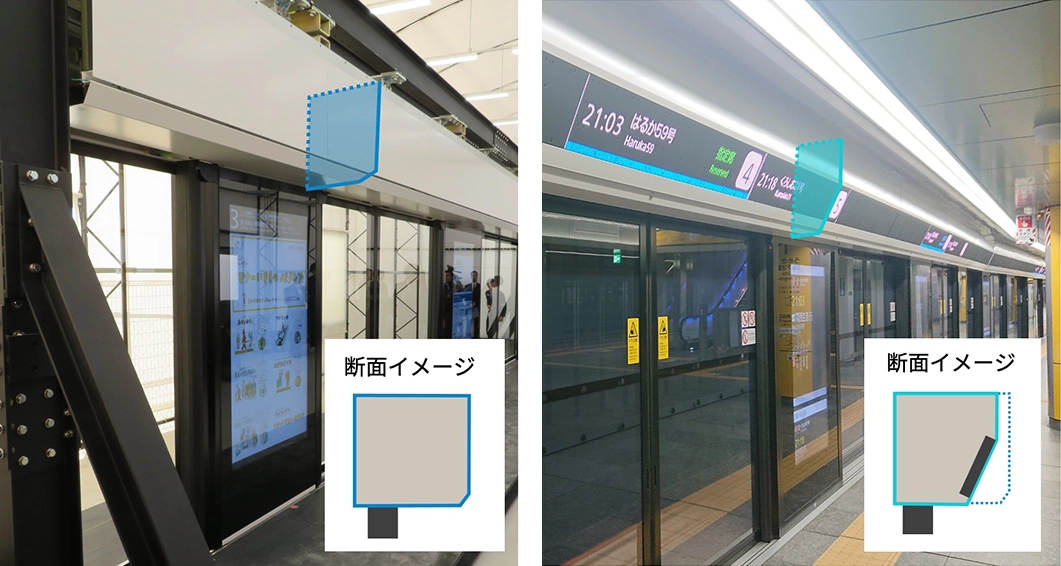
Left: Header box of the first test model
Right: Current smaller version of the header box
Making the most of our experience to tackle every concern
Did the construction work go smoothly after the product was completed?
Sakaguchi:We faced many problems at the construction stage, as well. For example, the humidity spiked up to 99%, causing severe condensation that left the underground site water-soaked. We couldn't proceed with any work until that was resolved.
Ichiryu:We had already experienced equipment failure caused by condensation in a previous project, so we rushed to remove the accumulated moisture. With JR West's assistance in gathering fans from all over Osaka Station, we were able to overcome this difficulty by sweeping away the humidity using the enormous number of fans.
Akutsu:We also grappled with the 2D sensors producing false positives for unknown reasons. We eventually determined that dust from the construction site accumulating on the parent doors was causing the misreadings. Adjusting the laser detection range resolved the issue.
Ichiryu:When you deliver a new product, problems will inevitably arise to a greater or lesser extent. Besides, this project involved many new elements, the full testing scope was unclear. This was why we had to conduct extensive tests by making the most of the know-how that we had accumulated through past experiences to identify potential concerns from various angles. Even so, we broke out in cold sweats during the first train test, just one month before operational launch, when the platform doors failed to open. We ran further tests, provided detailed feedback on even minor concerns for investigation, repeating this process until we could make it operational-ready. In retrospect, there were over 300 instances of feedback provided.
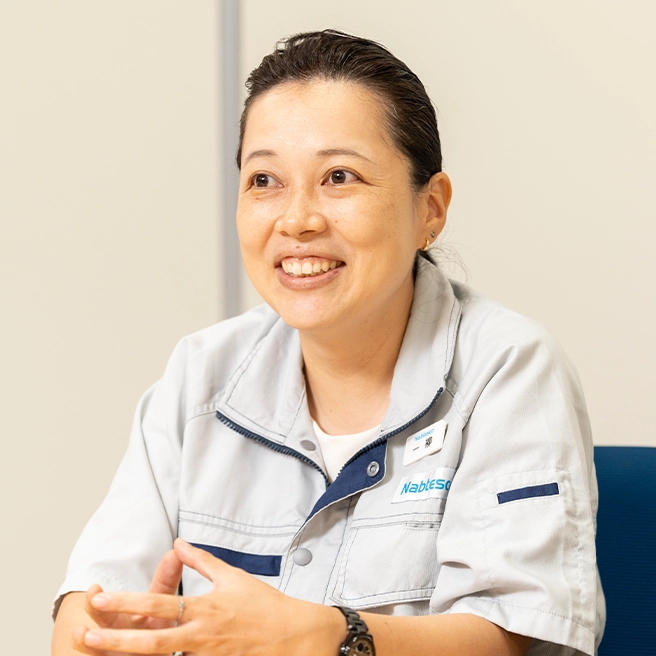
Sakaguchi::I have heard related parties commented, "Today's stable operations wouldn't be possible without the hard work of Ms. Ichiryu, who has clarified all necessary test scenarios." Many involved parties and members from the press and the general public showed up on the first day that the doors entered into service. What struck me was the hushed silence across the platform as the first train's doors opened and closed. At that moment, I felt how much all the people on the platform had been looking forward to witnessing these doors in action. I felt fearless when I first joined this project, but I have learned to be anxious at work in a healthy sense by seeing the dedicated approach of West Japan Railway Techsia (Techsia) team and senior fellow Nabtesco members in person.
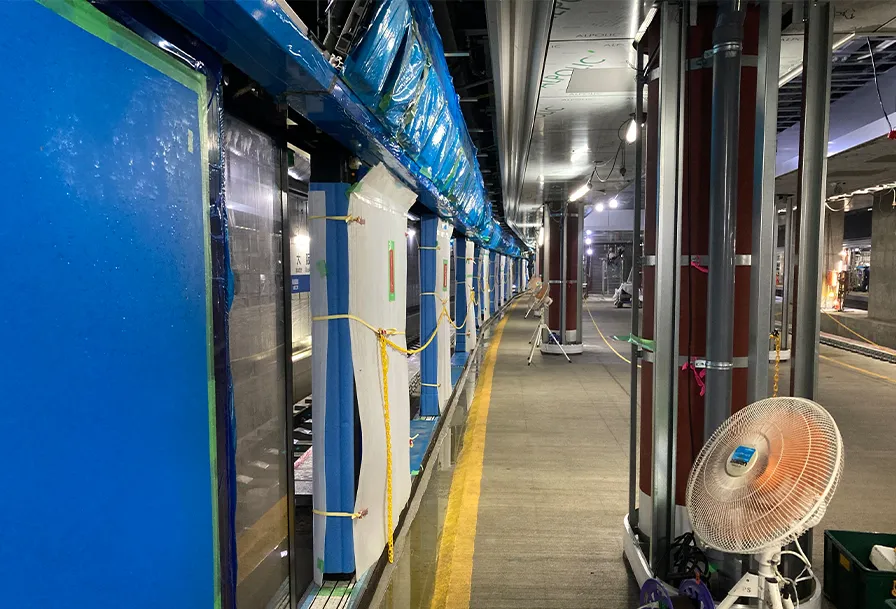
Numerous electric fans were used to sweep away the humidity in the water-soaked construction site.
Full-height platform screen doors resulting from uncompromised improvement efforts and pursuit of the safety of project members.
These innovative world-first platform doors have been operating stably with no significant issues.
Passing on responsibility, commitment, and passion to the next generation
Could you tell us about your future goals?
Niiyama:This project was an open innovation initiative with two companies: JR WEST, which aims to create "a station of the future," and Techsia, which has extensive knowledge of the unique environment of train stations. In my opinion, the world-first full-height platform screen door unit would not have been possible without our partnership with the two companies. While there may be few opportunities to directly replicate this product, I hope we can apply this technology to other stations in the future through our partnership with the two companies.
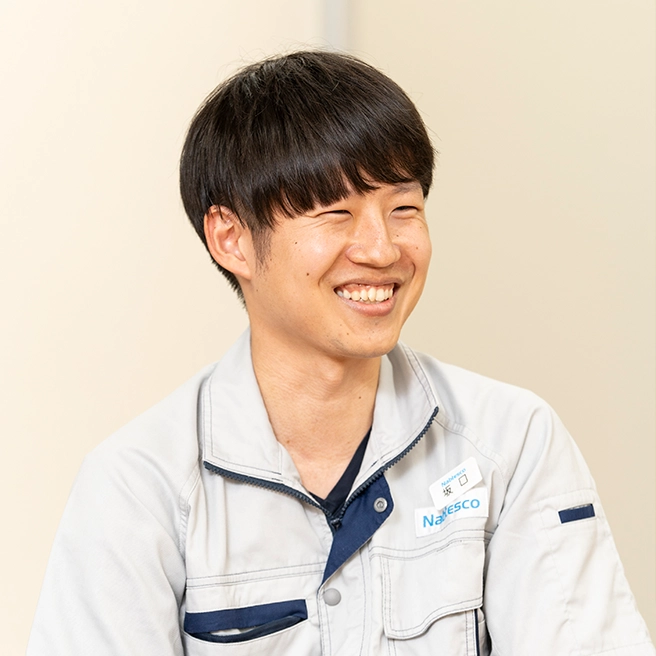
Sakaguchi:I am fairly young and a little less experienced, but I was given the opportunity to serve as a site supervisor in this project, which was a very valuable experience. I have also learned how much trust the JR WEST Group has in Nabtesco, which has brought me to realize the significance of my seniors. I would like to continue to develop my technical skills and experience with even more passion and a sense of responsibility.
Katayama:I was impressed by how the young members of Nabtesco were so enthusiastic about this project. It not only involved taking on a world-first challenge, but it was also a great stimulus for them to have JR West members participate in the meetings and exchange opinions frankly with Nabtesco members as if they were having meetings between superiors and subordinates of the same company. Engineers often struggle with issues that are hardly understood by others, but the fact that they were able to work with the understanding of JR West was a great source of motivation for them. I strongly felt that we should pass down the spirit of challenges, which allows us to willingly take on great challenges and innovations to the next generation and continue to meet the expectations of customers.
Finally, what do you think is the key to successful innovation?
Katayama:The word "fear", which came up frequently in this project, is perhaps something that all Nabtesco members involved in the infrastructure business have to face. On the other hand, when I listened to the stories of the members involved in the project, I could feel a strong sense of "responsibility, commitment, and passion" for success. Platform screen doors must continuously operate safely, no matter how difficult it is. The world-first platform screen door unit was completed after the various members struggled to come up with ideas, repeated trials and errors, and kept overcoming obstacles. Work cannot always be exciting, and it may be hard more often than not. Even so, I believe that the "responsibility, commitment, and passion" of Nabtesco challengers, who are constantly creating new value for society, will continue to turn concepts of innovation into reality.
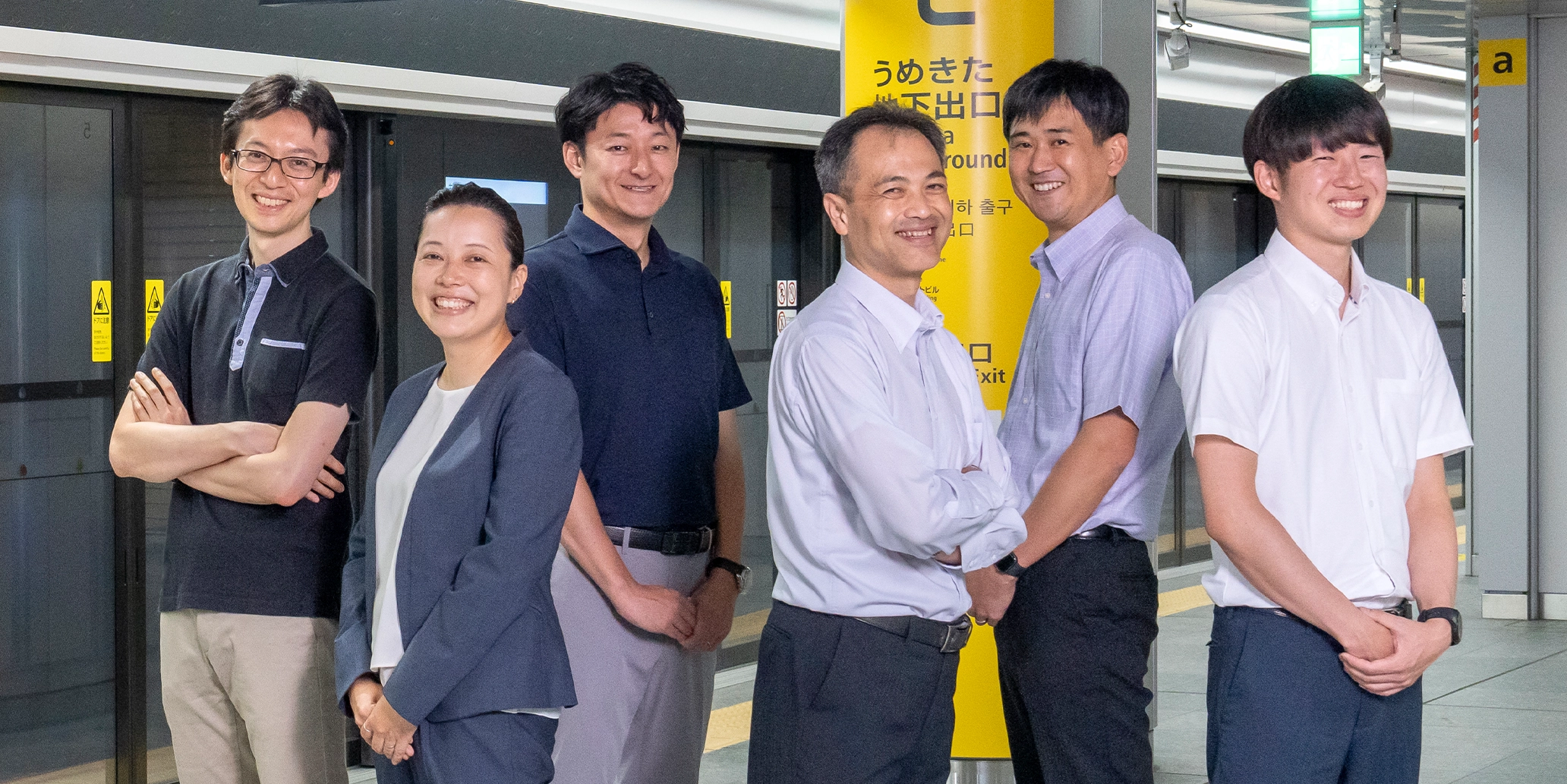
Left to right in the photo
Kakuta Inoue Control Development Division, Technology Department, Accessibility Innovations Company
Ikuko Ichiryu Manager, Kobe Design & Engineering Section, Platform Door Business Unit, Accessibility Innovations Company
Shohei Akutsu Kobe Design & Engineering Section, Platform Door Business Unit, Accessibility Innovations Company
Kaoru Katayama Senior Manager, Platform Door Business Unit, Accessibility Innovations Company
Tomoaki Niiyama Kobe Design & Engineering Section, Platform Door Business Unit, Accessibility Innovations Company
Ryo Sakaguchi Kobe Design & Engineering Section, Platform Door Business Unit, Accessibility Innovations Company
Interview: January 2024
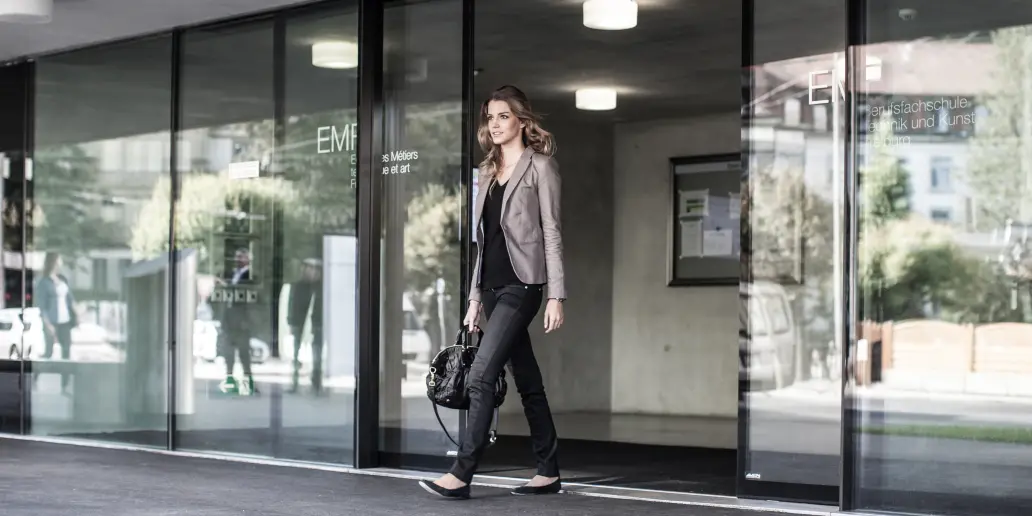
Platform Screen Doors Business
The provision of platform screen doors contributes to the prevention of train-related accidents, improves the efficiency of air conditioning, and enables unmanned operation in new transportation systems, thereby achieving high safety and punctual operation of railway infrastructure. Nabtesco’s combined global market share for automatic platform gates and railway platform screen doors (full-height type) is approximately 20% (Nabtesco’s estimate), and we are particularly successful in the developed markets of Japan, Europe, and Hong Kong.
Nabtesco's approach to creating innovations
Intrapreneurship program"Light"
This program aims to foster entrepreneurial spirit and create innovations and new businesses. Specifically, challengers (employees) with business ideas work with accelerators (the secretariat and external experts) to refine their ideas and try making business proposals in a context format.
Accelerating open innovation"Nabtesco R&D Center"
Nabtesco is seeking to actively collaborate with external parties, i.e., companies and universities, through open innovation. Nabtesco R&D Center, located in Kyoto Research Park, is the hub for this initiative. In addition to accelerating development by utilizing 3D printers, we are promoting incorporation of various insights through external collaboration and development of global, technical talent.
Promoting strategic IP management"IP Landscape"
We believe that intellectual property strategies also play an important role in ensuring that Nabtesco will remain an innovation leader for a medium-to-long term. Therefore, we analyze IP (intellectual property) information using a method called "IP landscape" to search for market and customer needs and opportunities for new businesses, study technological trends of competitors and implement testing of development themes.
